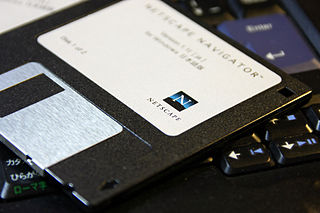 In the last 30 years we’ve witnessed countless IT and PC revolutions: circular battles where centralized vs. decentralized, open vs. proprietary forces captured, then lost, ground only to gain ground once again.
In the last 30 years we’ve witnessed countless IT and PC revolutions: circular battles where centralized vs. decentralized, open vs. proprietary forces captured, then lost, ground only to gain ground once again.
Computers existed before of course, but only in the last few decades have consumers and office workers had regular access to computers. A huge industry around hardware, operating systems, applications and services arose. As with every other revolution and huge new market we saw power struggles where the different players were fighting about the rules of this new market. Everybody wants to have the biggest part of the fish.
But users demanded interoperability. Word needed to work on my personal Mac and my office PC. Websites needed to work on all browsers. So, despite wanting to lock people in, vendors had to find a way to play nice – at least semi-nice.
Questions of the Past
Some of the more interesting battles were around the questions:
– Should hardware be monolithic (Apple) or should people and companies be able to buy components and build their own computers (PC)?
– Should an operating system be bundled with the hardware (Apple, partly Microsoft) or should it be sold separately by an independent software vendor (Linux, partly Microsoft)?
– Should applications be bundled with an operating system (IE) or should consumers be able to choose independently (Netscape)?
– Should software be proprietary or is it better to have it open source (GNU, Linux) and if yes, which license is the best?
– Is it useful to have open file format standards (ODF) or is it fine to have de facto standards by some vendors (DOC)?
– Should APIs be open and standardized so that consumers can choose between different operating systems and applications or is it fine to have proprietary APIs?
We don´t have answers to all of these questions yet but most consumers and IT managers understand the challenges and implications if they buy certain hardware, software or services.
But IT is in the middle of its biggest shift ever. All the data is moving to “the cloud” and is no longer primarily hosted on the computers of the users or the companies. Applications, too, are moving to the cloud and local apps and code are becoming less and less relevant. Enterprise IT and consumers are becoming more and more cloud clients. The rise of mobile and tablet computing stimulates this trend even more.
We can be sure that our IT will go through its biggest shift ever in the next 5-10 years.
The architecture of the applications, storage and network already looks very different today than it was 10 years ago — and it will keep on changing with an even higher speed.
Questions for the future
But how will the new cloud world look? What are the current battles and power struggles between the players that will impact this? Who will grab the biggest piece of this new fish and how will the world of consumers and business look in 10 years? Who controls what? What are the new monopolies and what are the rules of this new game?
Most of the well-known questions of the old “local” and non-cloud computing will pop up again.
– Can I run an Amazon or Google or Microsoft compatible cloud stack wherever I want — like at a different provider or on premise — or is hardware and OS locked together again?
– Can I run cloud applications like Salesforce or Gmail on a different cloud stack or are applications and operating systems linked again so that consumers don´t have a choice?
– Why is it that Gmail has very deep Google Calendar integration but can´t talk to a 3rd-party calendar?
– Are the cloud stacks that someone builds their complete IT stack on proprietary or open source? Is there a vendor lock-in?
– Who can review and audit the code and who has access to the data?
– Is it possible to export data from one cloud vendor and import it into another without the need to rewrite all the applications?
– Are there open and standardized APIs so that cloud stacks of different vendors can be mixed?
I think there are a lot of tough and tricky questions to figure out and to solve in the next few years before the cloud is as open and flexible as local IT. Which it will have to be.
I once heard a senior IBM executive tell an audience, “if given the choice between A and B, most customers will choose A…. and B.”
A lot of work has to be done – and will be done — to decouple the individual building blocks of cloud computing before consumers and users can choose what is best for them. Competition and a free market of components and applications are needed to unlock the full potential of cloud computing.
Once again, users are clamoring for interoperability, openness, flexibility. Open source and open standards and APIs are the only option to make this happen.
Frank Karlitschek is co-founder and CTO of OwnCloud.


